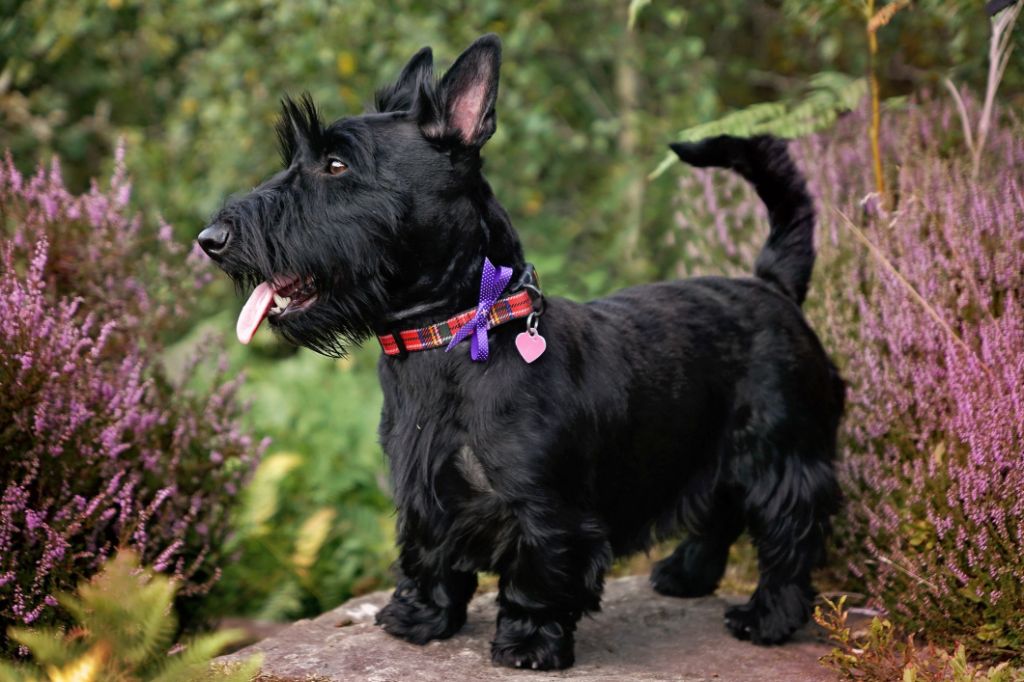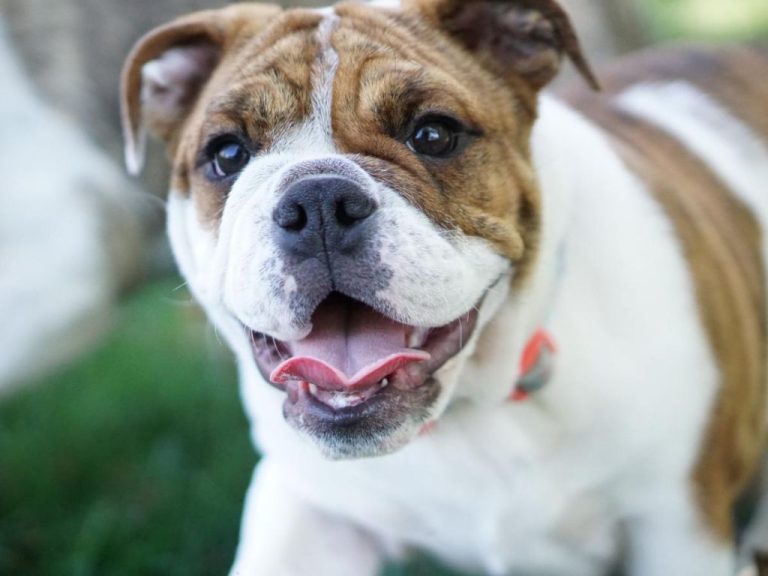Scottish Terrier: Traits And Characteristics Of The “”Scottie””
The Scottish Terrier, often referred to as the “Scottie”, originated in Scotland during the 17th and 18th centuries. It was originally bred to hunt rodents and other vermin. Over time, the breed transitioned into a companion dog favored by British royalty in the 19th century. Today, the Scottish Terrier is known for its confidence, independence, and devotion to its family. While its origins were as an alert and tenacious working terrier, the breed now excels as a loyal house pet and show dog thanks to its dignified nature and distinctive appearance.
According to the Canadian Scottish Terrier Club, the Scottish Terrier breed standard emerged in the late 19th century as breeders and kennel clubs began promoting uniform physical traits. However, writings and artwork dating back to the 16th century depict terrier types remarkably similar to today’s Scotties in both appearance and temperament. The essential qualities and character of the Scottish Terrier have remained constant despite shifts in the breed standard over the centuries.
Physical Characteristics
The Scottish Terrier breed standard describes an instantly recognizable dog. Some key physical traits include:
Size: The Scottie is a small to medium breed, typically standing 10-11 inches tall at the shoulder and weighing 18-22 pounds. Females are generally slightly smaller than males.
Coat: The Scottish Terrier has a hard, wiry, weather-resistant outer coat with a soft dense undercoat. Their coat requires regular hand stripping to maintain its texture and appearance.
Colors: Acceptable colors range from steel gray and black to brindle, wheaten and sandy. White should not predominate on the body and is limited to the chin, chest, legs and feet.
Distinguishing features: Scotties have a distinctive medium-length head that tapers to a blunt wedge-shape muzzle and a defined stop at the eyes. Their ears are small, sharp, erect and tipped forward. Scottish Terriers have a compact, well-muscled body. Their short legs give them a unique ground-hugging look.
Temperament
Scotties are typically known for being independent, feisty, and loyal dogs. They can be stubborn and territorial, which stems from their history as ratters and working dogs protecting farms. However, with proper socialization and training, the Scottie is devoted and loving to their family.
The Scottish Terrier is known for having a mind of its own and is not eager to please its owner. It was bred to hunt vermin on its own and think independently. This background has led to an independent personality that can, at times, lead to stubbornness. However, Scotties are exceptionally loyal and protective of their loved ones once a bond is established.

Despite their small stature, Scotties are known for being feisty and energetic. They have strong guarding instincts and plenty of courage. Their lively spirit and devotion make them wonderful companions for those willing to accommodate their sometimes willful personalities. With patience and consistency, the Scottish Terrier’s renowned feistiness can be channeled into an outgoing, playful demeanor around family.
While their independence can pose training challenges, proper socialization and firm leadership can temper the Scottie’s stubborn streak. They thrive when respected as clever, dignified dogs. With an owner willing to accommodate their unique temperament, the loyal Scottie will return abundant affection and provide endless entertainment.
Overall, the Scottish Terrier is a spirited, smart, and affectionate breed. Their distinctive temperament simply requires understanding to bring out their best qualities as a devoted companion.
Activity Level
Scottish Terriers have moderately high exercise needs. They require 30-60 minutes of exercise per day to stay healthy and happy [1]. This energetic breed enjoys brisk walks, playing fetch, or running around in a securely fenced area.
Scotties are not couch potatoes – they need some sort of exercise and playtime every day. However, with their short legs, they do not require extremely intense exercise like hiking for miles at a time. Shorter, more frequent bursts of activity are ideal. Owners should make sure to provide enough physical and mental stimulation through play, training, or exploring outdoors [2].
If left inactive for long periods, Scottish Terriers can become bored and destructive. Providing the right amount of daily activity will help prevent problem behaviors and keep a Scottie physically and mentally enriched.
Training
Scottish Terriers are described as independent thinkers that can be stubborn, so training requires patience and consistency (https://www.hepper.com/how-to-train-a-scottish-terrier/). Positive reinforcement training methods work best, as Scotties respond better to praise and rewards than to punishment or scolding. Use treats, toys, and affection to reinforce desired behaviors. Be firm and consistent with commands, as Scotties will test boundaries. Housetraining may take time and crate training can help. Socialization from an early age is also important. With persistence and positive attitudes, Scottish Terriers can be trained using reward-based methods that respect their strong-willed nature.
Health
Prone to Certain Health Conditions: The Scottish Terrier, while generally healthy, is prone to some health issues. According to PetMD (https://www.petmd.com/dog/breeds/scottish-terrier), they are prone to health conditions including Scottie Cramp, Von Willebrand’s Disease, liver shunt, and hypothyroidism. Scottie Cramp causes muscle spasms and cramping. Von Willebrand’s Disease impacts blood clotting. Liver shunts are abnormal blood vessel development in the liver. Hypothyroidism is an underactive thyroid gland. Knowing about these potential health issues can help owners get their Scottie tested and treated early.
Grooming
The Scottish Terrier has a wiry, weather-resistant coat that requires regular grooming and maintenance. Their coat consists of a harsh outer coat and a soft undercoat. The outer coat can grow continuously and needs to be periodically “stripped” or plucked by hand to remove dead hair and allow new growth. This hand-stripping also helps maintain the texture and correct appearance of the Scottie coat.
Without proper stripping, the dead hairs can mat and felt together, causing skin problems. A Scottie’s coat should be stripped two to three times per year, often during seasonal shedding periods. Many owners choose to have this hand-stripping done professionally by a groomer. In between full stripping sessions, regular brushing and combing is needed, ideally at least once a week.
Bathing can be done when needed, using a mild shampoo made for dogs. Overbathing should be avoided, as it can dry out the coat. Regular brushing, combing, and stripping keeps the Scottish Terrier’s coat clean and tidy. Proper grooming also allows you to check for any parasites or skin conditions. Overall, Scotties have fairly high grooming needs compared to some breeds due to the maintenance required for their wiry two-layered coat.
Living Conditions
The Scottish Terrier is well-suited for apartment or city living (AKC, 2023). Their small size and moderate activity level allows them to thrive in urban environments. Scottish Terriers don’t require a large yard to run around in, but daily walks and playtime are still important. Their short, dense coat also makes them relatively comfortable in warmer climates. Some care should be taken in extremely hot areas, as Scotties can be prone to heat stroke. Providing ample shade and cool water is recommended. Though they are adaptable to small living quarters, Scottish Terriers still need regular opportunities to vent their energy. Overall, the breed’s compact size and exercise needs make them a good choice for those living in apartments or congested city spaces.
Care
The Scottish Terrier is a moderately high maintenance breed that requires regular grooming and exercise (AKC). Their wiry, weather-resistant coats need to be hand stripped or trimmed every 3-4 months to remove dead hair and maintain the correct texture. Scotties shed minimally but should be brushed 1-2 times per week to minimize loose hair (Betterpet).
This energetic terrier breed needs 30-60 minutes of vigorous exercise daily, such as a brisk walk or engaging play session. A securely fenced yard is recommended so they can safely run around off-leash. Scotties can adapt to apartment living if sufficiently exercised. Due to their strong hunting instincts, they should be kept on a leash when not in a contained area (PetMD).
Scotties are prone to obesity and care should be taken not to overfeed them. Two smaller meals per day rather than one large meal is recommended. Their dietary needs can generally be met with a high-quality commercial dog food appropriate for their age (AKC).
Conclusion
The Scottish Terrier, also known as the Scottie, is a small but mighty dog breed known for its distinctive wiry coat, plucky personality, and loyalty to their families. Though originally bred to hunt vermin and small prey in the highlands of Scotland, Scotties make for devoted and affectionate companions. Their confident, feisty nature combined with their entertaining antics endear them to many owners. While their independent streak means they can be stubborn at times, Scotties are intelligent dogs who excel at many activities when trained consistently with positive reinforcement. Though Scotties require regular grooming to maintain their unique coat, they can thrive as pets in urban or rural homes. In summary, the spirited and amusing Scottish Terrier is a one-of-a-kind companion for those looking for a small yet mighty, alert and active dog.





